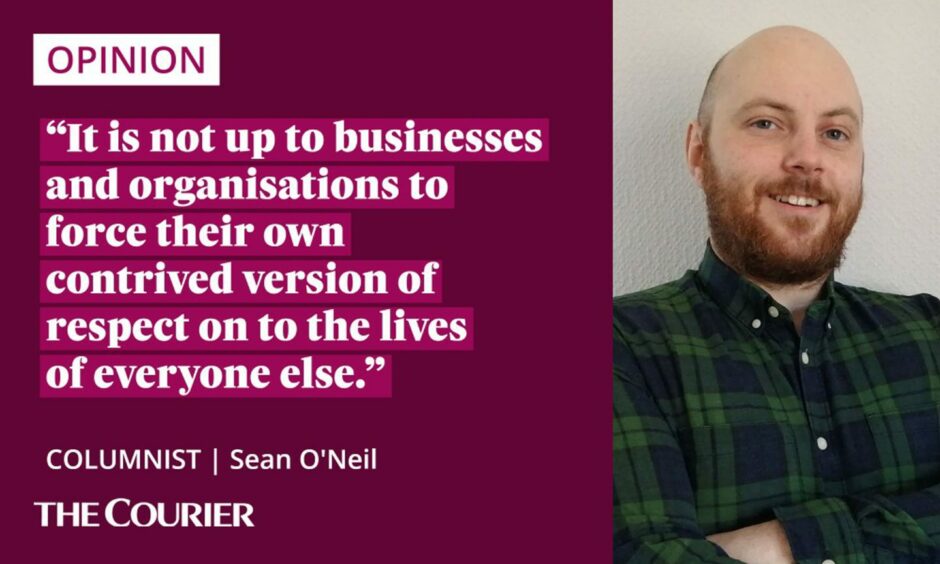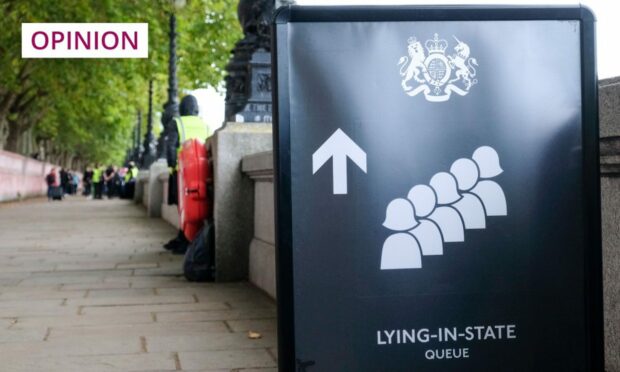Since the queen’s death last Thursday, the word ‘respect’ has been spoken or written thousands of times over.
I’d imagine it hasn’t had an outing like this since 1967 – when Aretha Franklin released her song by the same name.
And, as happens when you repeat a word over and over again, it appears to have lost much of its meaning.
Actions taken under the banner of respect have ranged from the ludicrous to the troublesome to concerning.
And often, they have highlighted a complete lack of respect for ordinary people.

Let’s start with the ludicrous.
As a mark of respect to the queen, Norwich City Council closed a bike rack for 12 days.
Supermarkets turned down their check-out beeps and the Met Office suspended weather updates.
Do any one of those things strike you as an actual show of respect for the death of a 96-year-old woman?
Or is it all just pomp and show?
Does respect for the Queen mean upheaval for the rest of us?
Moving on to the troublesome.
The Scottish and English Football Associations cancelled all matches on their own accord last weekend.
Never mind the more than a million fans who attend games each week and the money they will have lost on tickets, travel and accommodation.
The Great North Run for children was postponed. Center Parcs announced it was kicking out guests for 24 hours on the day of the funeral, then backtracked after a backlash.
Is this widespread wrecking of ordinary people’s plans really a mark of respect to the queen?
Or is it just a mark of disrespect to those ordinary people?
Because most of the 67 million people who make up the British public did not know the queen personally.
Many are not grieving or in mourning.
it's only a matter of time before the state funeral is postponed as a mark of respect to the Queen
— Henry Mance (@henrymance) September 13, 2022
That fact does not diminish the queen’s life or legacy, or prevent those who are from doing so. It’s just a truth.
And it is not up to businesses and organisations to force their own contrived version of respect on to the lives of everyone else.
Pageantry or protest? Why can’t we have both?
Now let’s deal with the concerning.
Protesters have been arrested for questioning the monarchy.
At a time when it is deemed disrespectful to attend long-awaited GP and hospital appointments, we have had ceremonies of the utmost pageantry to usher in a new king while his problematic brother has returned to the public eye.
And as ordinary people struggle to deal with the cost of living, our governments have stopped governing and our unions striking.
Is this denial of reality, of dealing with the impending crisis, respect?
Or is it a mark of disrespect to the millions who want to know how they are going to survive this winter?
The queen’s death is a momentous occasion.
For some, especially her family, it will be a time of grief, of mourning.
But as crowds gather to see the queen lying in state – one visitor revealing she has been round seven times, as if the body of a 96-year-old woman was some kind of a tourist attraction – it’s hard to see what any of this has to do with respect.












Conversation